iMETOS 3.3
Who knows if that forecasted precipitation will do more harm than good? Metos knows.
iMETOS 3.3
The iMETOS 3.3 is the ultimate weather station, giving you the most complete view of the conditions in your field.
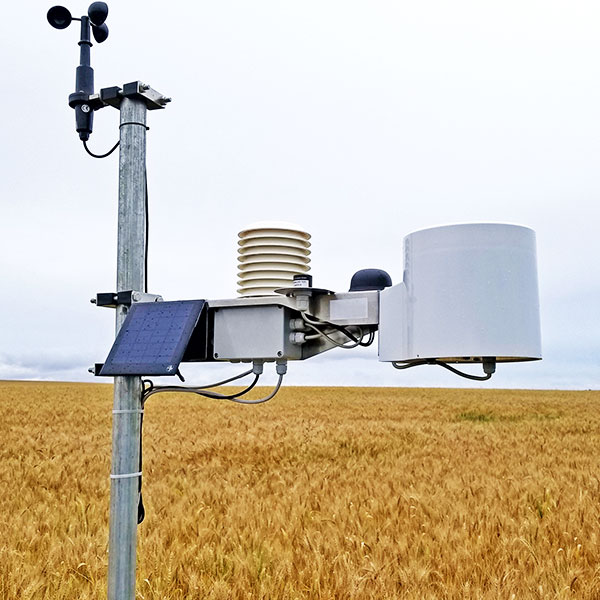
A POWERFUL, FLEXIBLE WEATHER STATION FOR SOPHISTICATED IN-FIELD MONITORING
iMETOS 3.3 monitors data with a variety of sensors giving you near real-time, weather-related site conditions including: temperature, precipitation, relative humidity, leaf wetness, solar radiation, and wind speed and direction.
The station has a built-in modem for direct communication with FieldClimate. It captures localized forecasts and data that are regularly uploaded to the FieldClimate software, so you get near real-time information wherever you are.
The iMETOS 3.3’s durable and flexible design can withstand the harsh Canadian climate. It’s efficiently powered by a rechargeable battery and a solar panel, and is extremely reliable due to non-volatile internal memory that can store up to 8MB of logged data. Along with accessing your historical data, you can also take advantage of decision support solutions like weather forecast, spray forecast, disease models and irrigation management.
With the ability to handle up to 600 sensors, you chose which configuration of crop sensors will give you the most complete view of your field conditions. The iMETOS 3.3 can even send text alerts in case of frost, strong rain, high temperature and more.
KEY BENEFITS
The ultimate weather station for powerful, flexible and sophisticated in-field monitoring, iMETOS 3.3 provides a complete solution for environmental monitoring, disease models, soil moisture and more.
- built for all climatic conditions and powered by rechargeable battery and a solar panel.
- built-in UMTS/CDMA modem provides direct real-time communication with the FieldClimate platform
- handles up to 600 sensors through the intelligent sensor bus system
- extremely reliable due to non-volatile internal memory that can store up to 8 MB of logged data (ca. 1 month)
- program SMS alarms to alert you of forecasted frost, strong rain, high temperature and more
- data regularly uploaded to FieldClimate platform where you can access it from any place at any time in real-time
- access historical data and daily evapotranspiration values
- take advantage of decision support solutions like localised Weather Forecast, Disease Models and Irrigation Management
| PRODUCT VARIATIONS | |||||||
| iMETOS IMT80 | iMETOS IMT180 | iMETOS IMT200 | iMETOS IMT280 | iMETOS IMT280US | iMETOS IMT300 | iMETOS IMT300US | |
| Rain Gauge | √ | √ | √ | √ | √ | √ | √ |
| Air Temperature | √ | √ | √ | √ | √ | √ | √ |
| Relative Humidity | x | √ | √ | √ | √ | √ | √ |
| Leaf Wetness | x | x | √ | x | x | √ | √ |
| Global Radiation | x | x | x | √ | √ | √ | √ |
| Mechanical Wind Speed | x | x | x | √ | x | √ | x |
| Ultrasonic Wind Speed | x | x | x | x | √ | x | √ |
| Ultrasonic Wind Direction | x | x | x | x | √ | x | √ |
| Need more sensors? Add up to 400 extra sensors from the wide range supported. | |||||||
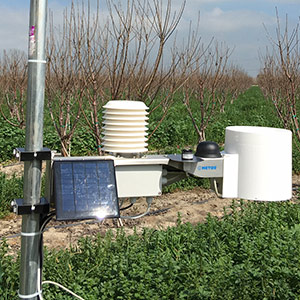 |
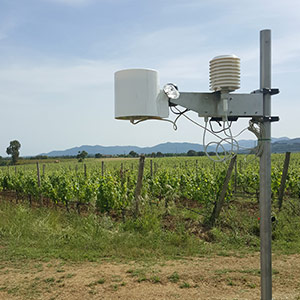 |
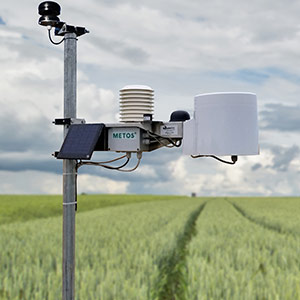 |
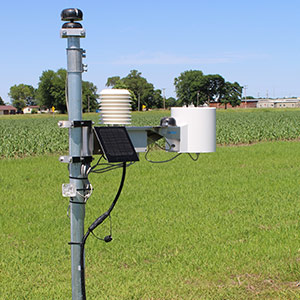 |
| TECHNICAL SPECIFICATIONS | |
| Sensors | 1 wind speed 1 leaf wetness 1 rain gauge 1 water-meter (reed) 2 hygroclips (air temperature and relative humidity) 5 digital inputs: automatic sensor recognition, supporting sensor chains (max. 600 sensors) |
| Extension connector | Radio access point or Sentek Drill & Drop or ultrasonic wind sensor or two extra chain connectors – Pessl Instruments bus cable nodes |
| Memory | 8 MB flash memory |
| Internet connectivity | GPRS, HDSPA, UMTS, WiFi, LTE class 1, LTE class M (Q2/2020) |
| Alert | SMS, user configurable via website |
| Dimensions without sensors | 41 cm L x 13 cm W x 7 cm H |
| Weight without sensors | 2.2 kg |
| Measuring interval | 5 minutes (by default) |
| Logging interval | 10-120 min (user selectable) |
| Transmission frequency | User selectable |
| Battery | 6V, 4.5AH, Operating range: -35 °C to 80 °C |
| Solar panel | Dimensions: 13.5 x 13.5 cm, 2 Watt solar panel |
| iMETOS 3.3 base unit (no sensors included), internet based logger, battery 4.5Ah, solar panel, UMTS based, logger, mounting brackets |
Measurement, logging and transmission intervals can be customized to fit the client’s needs.
Measurement interval: occurrence, when the station measures the attached sensors Logging interval: occurrence, when the station calculates the minimum, maximum and average values of all measurements which happened in this logging interval
Transmission interval: occurrence, when the station transmits the stored data from the logging interval to the FieldClimate.
